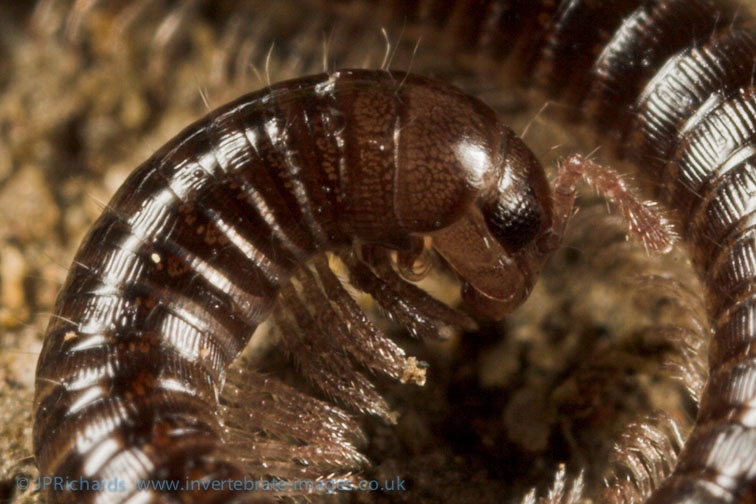Ophyiulus pilosus (Newport, 1843)
Status:
GB IUCN status: Least Concern
ID Difficulty
Identification
This large dark millipede with a pointed projecting telson (tail) may be confused with several morphologically similar species, including Julus scandinavius, Leptoiulus kervillei or even Tachypodoiulus niger.
Males of the genus Ophyiulus can be recognised by their first pair of legs being modified into a sharply pointed sickle-shaped structure.
In light of the recent discovery of the introduced Ophyiulus germanicus in Britain (which the male has similar sickle-shaped first legs) mature males should be examined to be certain of the identification (ideally 1st leg pair and gonopods).
Distribution
This is one of the commonest and most widespread species in Britain and Ireland.
Kime (1999) suggested that O. pilosus may have been introduced to Britain and Ireland from central Europe rather than having spread naturally following the last glaciation. This view is based on the fact that it is common in north Italy and nearby alpine areas but is rare or absent in much of northern Europe, with the exception of southern Scandinavia where it could also have been introduced. Jeekel (2001) agreed that O. pilosus was probably introduced to Britain but considered it native to Scandinavia and thought that this was probably the source of the British and Irish populations. The species has also been introduced to New Zealand and North America (Blower, 1985).
Habitat
It was considered typical of leaf litter in deciduous woodland by Blower (1985) and 45% of the records of this species were from woodland. However, it has been found in a very wide range of habitats and analysis of the recording scheme data suggests it has no strong association with any particular habitat. The analysis does provide some evidence of the synanthropic tendencies of this species, especially on cultivated land.
Phenology
Animals take two years to reach maturity but after breeding in the spring both sexes die and hence there are few adults around by late summer (Blower & Miller, 1974). However, there are some records of adults from all months of the year.
This species account is based on Lee (2006).
Links
MilliBase - Global catalogue of Millipedes: https://millibase.org/aphia.php?p=taxdetails&id=945364







